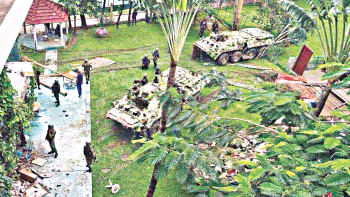Why are young boys disappearing?

In a world of rising hatred and bigotry, the threat of radicalisation is never too far away. This is especially so in Bangladesh, where the clash between liberal and right-wing ideologies is increasingly taking an ugly turn and the old enthusiasm for democracy is evaporating into cynical disillusions. This is an ideal breeding ground for extremism. Recently, we got a reminder of that after two batches of young men in Cumilla, apparently radicalised by an Al-Qaeda-inspired Islamist outfit, came on the radar of the police. The two batches – comprising seven and four youths each, mostly students – reportedly left their homes within the space of a week.
After the Cumilla incidents, law enforcers have begun making a list of suspected missing youths. They are assuring us that things are under control. But recent developments suggest that militant recruitment and activities are ongoing.
While the Rapid Action Battalion (Rab) claims to have apprehended the four who left on September 1, the seven, who left on August 23, remain missing. All of them, Rab says, were brainwashed by the same outfit, Ansar Al Islam, and bound for a "hijrat" (a reference to the Prophet Muhammad's journey from Mecca to Medina) to unknown destinations. This is quite worrying. Bangladesh witnessed a similar case of young boys going missing from 2014 to 2016, which eventually culminated in a deadly attack on the Holy Artisan café in Gulshan on July 1, 2016. Ansar Al Islam, also known as the Bangladesh chapter of Al Qaeda in the Indian Subcontinent (AQIS), is said to have adopted a similar strategy of making its recruits perform "hijrat" as part of their indoctrination.
We are told that besides Cumilla, there have been disappearances in Chandpur as well. In July last year, four young men in Sylhet also left their homes. The next month, the Counter Terrorism and Transnational Crime (CTTC) unit of police claimed that at least 19 people went missing from Narayanganj's Araihazar Upazila. Are we seeing a trend here? Is it part of a sinister plan? After Holey Artisan, one can never be too careful. Reportedly, after the Cumilla incidents, law enforcers have begun making a list of suspected missing youths. They are assuring us that things are under control. But recent developments suggest that militant recruitment and activities are ongoing.
This calls for clarity and caution. Police need to regularly monitor both online and off-line spaces for signs of extremist activities and indoctrination. The problem with extremism in Bangladesh is that it is still considered a law enforcement issue. It is much more than that. Parents, schools, and religious and social institutions all need to work actively to ensure that the impressionable minds of young men are not easily corrupted by extremists. The government also needs to step up its deradicalisation programmes to ensure that misguided men have a way of coming back. Given the increasing ideological polarisation in society, we also need to promote dialogue to develop tolerance and civilise the expression of differences.

 For all latest news, follow The Daily Star's Google News channel.
For all latest news, follow The Daily Star's Google News channel. 







Comments